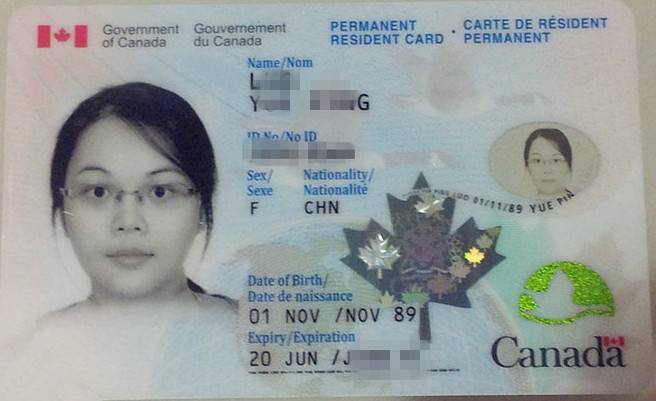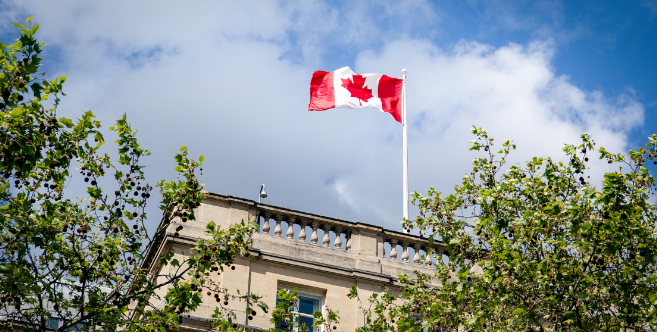Canadian Immigration Guide: A Complete Analysis Of The Key Points And Precautions For Applying For Maple Leaf Card
Canadian Immigration Guide: A Complete Analysis Of The Key Points And Precautions For Applying For Maple Leaf Card
Canada, this vast and fertile land is not only a paradise for nature lovers, but also a home for countless immigrants to dream of. Have you ever thought about how to successfully get the maple leaf card that symbolizes identity? Or
Canada, a vast and abundant country, is an ideal place for nature explorers, and is also the homeland that many people seek to settle down. Have you ever wondered how to successfully obtain the Canadian visa representing ownership? Or, on the way to Canada, what are the key points that must be treated with caution? Now, let's take a detailed analysis of these questions to reveal the core elements of the Canadian immigration process.
This article will contain multiple chapters to explain. First, introduce the connotation of the Canadian maple leaf card, secondly, analyze the common questions during the application process, and finally provide key points and guidelines for immigration to Canada. I hope this information can help you understand the Canadian immigration policy in depth and point out the way for your immigration process.
1. The basic concept of Canadian maple leaf card
The maple leaf card refers to the Canadian permanent residence card, which is the identity certificate granted by the Canadian government to foreigners who have obtained permanent residence qualifications. This card not only allows holders to settle in Canada, but also enjoy various benefits almost equal to those of the country’s citizens, such as free medical services and access to education grants. However, it should be noted that the maple leaf card is not permanently valid, and the general effective time is only five years. If the holder does not meet the corresponding residence conditions during this period, the maple leaf card may be invalidated.
According to the Canadian immigration regulations, permanent residents must live in the country for a total of 730 days within every five years, which is equivalent to two years. In addition, the maple leaf card is not equivalent to a Canadian passport. Cardholders must still retain their nationality in their country of birth, and do not have the right to vote, nor can they engage in public office campaigns.
2. Analysis of common problems when applying for maple leaf card
1. What ways can I apply for a maple leaf card?
Canada has a variety of immigration channels, covering technology introduction, reunion of relatives, business investment, and provincial nomination plans. Among them, the federal venture capital immigration project has attracted widespread attention in recent years. The project aims to attract innovative entrepreneurs to travel to Canada to add momentum to the local economy by starting a company. Applicants only need to have at least 50,000 Canadian dollars in financial resources and have experience in related fields to be qualified for application.
2. How long does it take to apply for a maple leaf card?
The review period of the maple leaf card will vary depending on the application project and the specific case. Typically, the review time for the skilled immigration category is about six months to one and a half years. The processing time for family reunion categories is often longer. If professional intermediary agencies like flying immigration are entrusted to provide assistance, it will help speed up the application process and can significantly increase the pass rate.
3. What should I do if the maple leaf card is lost?
If the maple leaf card is accidentally lost or damaged, you need to contact the Immigration Canada (IRCC) as soon as possible to initiate the reissue process. When completing the reissue procedures, the necessary application forms and identification documents must be submitted, and the specified labor fee must be paid. It is particularly worth reminding that during the reissue period, the holder's permanent resident qualifications are still valid.
3. Precautions and suggestions for immigration to Canada
1. Language skills are crucial
Applying for Canadian status, or seeking to integrate into your local life, it is crucial to have English or French skills. The country's official languages are English and French, and proficient in one of them will not only help improve approval rates but also allow immigrants to quickly integrate into the new environment.
2. Plan career development in advance
Before going to Canada, you need to fully grasp the work conditions there and be clear about your career direction. Popular industries such as IT, medical care, and engineering are particularly beneficial to skilled immigration. Moreover, the needs of occupations in each province are different, and it is very important to choose a province that suits you to settle in.
3. Cultural adaptation cannot be ignored
Canada's cultural environment is rich and diverse, which is very attractive, but those who have just arrived must carefully understand and abide by local customs. For example, Canadians attach great importance to personal space and polite communication methods, so don't interfere too much in other people's lives. In addition, participating in more collective activities can also help you adapt to the new environment faster.
Overall, the process of traveling to Canada contains many possibilities and many difficulties. We must make careful preparations in order to embark on our personal glorious journey in this area. May the explanation of this article provide some support for your immigration wishes!





